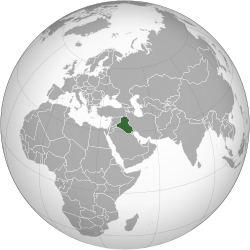 | |
| Country | Iraq |
|---|---|
| Continent | Asia |
| Numbering plan type | closed |
| Country code | +964 |
| International access | 00 |
| Long-distance | 0 |
Iraq area codes can be 1 or 2 digits (not counting the trunk prefix 0) and the subscriber numbers are usually 6 digits. In Baghdad and some other governorates, they are 7 digits. The mobile numbers have 10 digits, beginning with the 3-digit code of each operator followed by 7 digits.